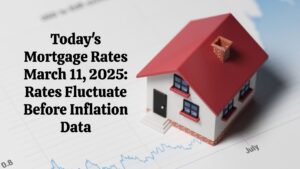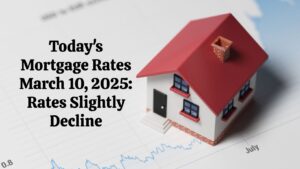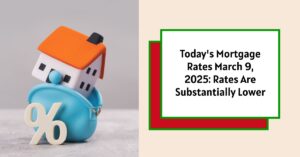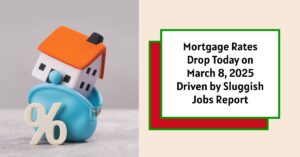Dreaming of owning a home but worried about your less-than-perfect credit score? Don't hit the panic button just yet! Getting a mortgage with a low credit score is entirely possible, although it might require a bit more legwork and strategizing. While a good credit score undoubtedly smooths the homebuying process, it’s not the be-all and end-all.
Think of it like this: your credit score is like a financial report card, giving lenders a glimpse into your creditworthiness. A lower score might raise some eyebrows, but it doesn't automatically disqualify you from the mortgage game.
This comprehensive guide is your roadmap to navigating the world of mortgages for low credit scores. We'll delve into understanding credit scores, exploring your loan options, and uncovering effective strategies to improve your chances of approval. Let’s turn that dream of homeownership into a reality!
Understanding Credit Scores and Their Impact on Mortgages
Before diving headfirst into mortgage options, let's demystify credit scores and understand how they affect your homebuying journey.
What Exactly is a Credit Score, and Why Does it Matter?
In simple terms, your credit score is a three-digit number that represents your creditworthiness, calculated based on your credit history. It tells lenders how responsibly you've managed your finances in the past, giving them an idea of the risk they take by lending to you.
Think of it as a trust score – the higher your score, the more confident lenders are in your ability to repay the loan. Several factors contribute to this magical number, including:
- Payment History: Paying your bills on time is crucial, accounting for a significant portion of your score.
- Amounts Owed: This refers to how much you owe on credit cards, loans, etc. Keeping your credit utilization low is vital.
- Length of Credit History: A longer credit history generally reflects positively, showing lenders you can manage credit over time.
- Credit Mix: Having a mix of credit types (credit cards, installment loans) can demonstrate responsible credit management.
- New Credit: Opening too many new credit accounts in a short period can negatively impact your score.
Credit Score Ranges: Where Do You Stand?
Credit scores typically range from 300 to 850, categorized as follows:
| Credit Score Range | Category | Mortgage Eligibility |
|---|---|---|
| 760-850 | Excellent | Ideal Candidate |
| 700-759 | Good | Generally Eligible |
| 620-699 | Fair | May face stricter terms |
| 580-619 | Poor | Challenging but possible |
| 300-579 | Very Poor | Extremely Difficult |
Don't despair if your score falls below the “good” range! While securing a conventional mortgage might be challenging, various loan options cater specifically to borrowers with low credit scores.
Mortgage Options for Low Credit Scores: Exploring Your Choices
Here comes the good news: even with a lower credit score, several mortgage options can pave your path to homeownership. Let's explore some popular choices:
1. FHA Loans: Backed by the Federal Housing Administration
FHA loans are government-backed loans designed to make homeownership accessible to a broader range of borrowers, including those with lower credit scores.
- Minimum Credit Score: The minimum credit score requirement for an FHA loan can be as low as 500, although a score of 580 or higher generally qualifies you for more favorable terms.
- Down Payment: One of the significant advantages of FHA loans is the low down payment requirement, which can be as low as 3.5% for borrowers with credit scores of 580 or above.
- Mortgage Insurance: Keep in mind that FHA loans come with mortgage insurance premiums (MIP), protecting the lender in case of default. You'll pay an upfront MIP and an annual premium, usually rolled into your monthly mortgage payments.
2. VA Loans: A Benefit for Eligible Veterans and Service Members
VA loans offer incredible benefits for eligible veterans, active-duty military personnel, and surviving spouses, often requiring no down payment and featuring competitive interest rates.
- Credit Score Requirements: While the VA doesn't set a minimum credit score requirement, most lenders look for a score of 620 or higher. However, some lenders may work with borrowers with lower scores.
- No Down Payment: VA loans often come with the significant advantage of requiring no down payment, making homeownership more attainable.
- Funding Fee: Instead of mortgage insurance, VA loans have a funding fee that can be paid upfront or rolled into the loan amount.
3. USDA Loans: Supporting Rural Development and Homeownership
USDA loans, offered by the U.S. Department of Agriculture, aim to make homeownership affordable in designated rural areas.
- Credit Score Requirements: While USDA loans don't have a set minimum credit score, most lenders prefer borrowers with a score of 640 or higher.
- No Down Payment: Similar to VA loans, USDA loans typically require no down payment, making them an attractive option for eligible borrowers.
- Geographic Restrictions: It's important to note that USDA loans have specific geographic eligibility requirements. You can use the USDA's property eligibility tool to determine if a property qualifies.
4. Non-QM Loans: Expanding Options for Diverse Borrowers
Non-QM loans (Non-Qualified Mortgages) offer an alternative for borrowers who don't meet the strict criteria of conventional loans. These loans often have more flexible underwriting guidelines, allowing lenders to consider various factors beyond traditional credit scores.
- Credit Score Flexibility: Non-QM loans can be a viable option for borrowers with lower credit scores, as lenders may consider alternative credit data or focus on factors like income and assets.
- Variety of Loan Programs: Non-QM loans encompass a range of loan products, each with specific eligibility criteria and terms, so it's essential to shop around and compare options.
- Higher Interest Rates: It's important to note that non-QM loans might come with higher interest rates compared to conventional loans due to the perceived higher risk by lenders.
Boosting Your Chances of Approval: Strategies for Success
Securing a mortgage with a low credit score requires strategic planning and effort. Here are some proven strategies to increase your likelihood of approval:
1. Know Your Credit Score and Understand Your Credit Report
Before approaching lenders, obtain your credit report from all three major credit bureaus (Equifax, Experian, and TransUnion). Review it carefully for any errors or inaccuracies that might be dragging down your score.
- Dispute Inaccuracies: If you find any errors, dispute them immediately with the respective credit bureau. Correcting even small errors can positively impact your score.
- Understand Your Credit History: Analyze your credit report to identify areas for improvement. This will give you a clearer picture of what factors might be affecting your score and allow you to focus your efforts on improving them.
2. Improve Your Credit Score: Take Action for a Brighter Future
While it takes time to improve your credit score significantly, even small improvements can make a difference.
- Pay Your Bills on Time: Consistently paying your bills on time is crucial for building a positive payment history, a significant factor in your credit score calculation. Set up automatic payments or reminders to avoid late payments.
- Reduce Credit Utilization: High credit utilization (the amount of credit you use compared to your total available credit) can negatively impact your score. Aim to keep your credit utilization below 30%.
- Avoid Opening New Credit Accounts: Each time you apply for new credit, it results in a hard inquiry on your credit report, potentially lowering your score. Avoid opening unnecessary credit accounts, especially in the months leading up to your mortgage application.
- Become an Authorized User: If a family member or trusted friend has a credit card with a good payment history, ask if they can add you as an authorized user. This can give your credit score a boost, especially if you're starting with limited credit history.
3. Save for a Larger Down Payment: Demonstrating Financial Stability
A larger down payment can be a game-changer when applying for a mortgage with a low credit score.
- Reduces Lender Risk: A larger down payment signifies a lower loan-to-value ratio (LTV), reducing the lender's risk and increasing your chances of approval.
- Lower Monthly Payments: A larger down payment translates to a smaller loan amount, resulting in lower monthly mortgage payments and potentially qualifying for better interest rates.
- Explore Down Payment Assistance Programs: Research down payment assistance programs (DPAs) offered by various organizations and government agencies. DPAs can provide grants or low-interest loans to help cover down payment costs.
4. Seek Guidance from a Mortgage Professional: Your Expert Guide
Navigating the mortgage process, especially with a low credit score, can be complex. Consulting with an experienced mortgage professional can provide invaluable guidance.
- Understanding Your Options: A mortgage broker or loan officer can assess your financial situation, credit history, and homebuying goals to recommend suitable loan programs.
- Getting Pre-Approved: Getting pre-approved for a mortgage can strengthen your position as a borrower, showing sellers you're serious and giving you a clearer picture of what you can afford.
- Negotiating on Your Behalf: Mortgage professionals can negotiate with lenders on your behalf, helping you secure the best possible loan terms and interest rates.
5. Build a Strong Application: Presenting Your Best Financial Self
When applying for a mortgage, presenting a well-organized and complete application package is essential.
- Gather Necessary Documentation: Collect all required financial documents, including pay stubs, tax returns, bank statements, and credit reports, to ensure a smooth application process.
- Maintain Consistent Employment: Lenders prefer borrowers with a stable employment history. Aim for at least two years of continuous employment in the same field or industry.
- Be Transparent About Your Financial Situation: Be upfront and honest with your lender about any past credit challenges. Transparency can build trust and demonstrate your commitment to responsible homeownership.
Final Thoughts:
Remember, obtaining a mortgage with a low credit score is achievable with the right approach. By understanding your credit, exploring loan options, and implementing strategic improvements, you can increase your chances of securing a mortgage and stepping into your dream home. Patience, perseverance, and expert guidance are your allies on this exciting journey!
FAQs
1. Can I really get a mortgage with a low credit score?
Yes, it's definitely possible to get a mortgage even with a lower credit score. While it might be more challenging than with a high score, there are several loan options designed for borrowers with less-than-perfect credit. This guide explores these options and strategies for improving your chances of approval.
2. What are some of the best mortgage options for people with low credit scores?
FHA, VA, and USDA loans are great options for borrowers with lower credit scores, as they often have more lenient credit requirements. Additionally, non-QM loans offer flexibility for those who may not meet traditional loan criteria.
3. How much can I expect to pay for a mortgage with a lower credit score?
Interest rates for borrowers with low credit scores are typically higher compared to those with good credit. This is due to the higher perceived risk for lenders. However, you can still get a mortgage, and by improving your credit and exploring various loan options, you can potentially negotiate better terms and lower rates.
4. What if I have a history of late payments or credit card debt?
Don't despair! While a history of late payments and credit card debt can impact your credit score, it doesn't necessarily disqualify you from getting a mortgage. By taking steps to improve your credit, such as paying your bills on time and managing your debt responsibly, you can demonstrate your commitment to financial stability and improve your chances of approval.
5. Where can I find help navigating the mortgage process with a low credit score?
Consulting with a mortgage professional is highly recommended. A mortgage broker or loan officer can guide you through the entire process, explain your options, and help you secure the best possible terms for your individual situation. They can also assist you with pre-approval, which strengthens your position as a buyer and provides a clear understanding of your affordability.
- FHA Mortgage Rates by Credit Score: 620, 700, 580, 640
- What Credit Score Do You Need to Buy House With No Money Down?
- How Long Does It Take to Get a 700-800 Credit Score?
- How To Improve Your FICO Credit Score: A Guide
- FHA Credit Score Requirements for Homeownership
- 10 Proven Methods to Elevate Your FICO Credit Score











